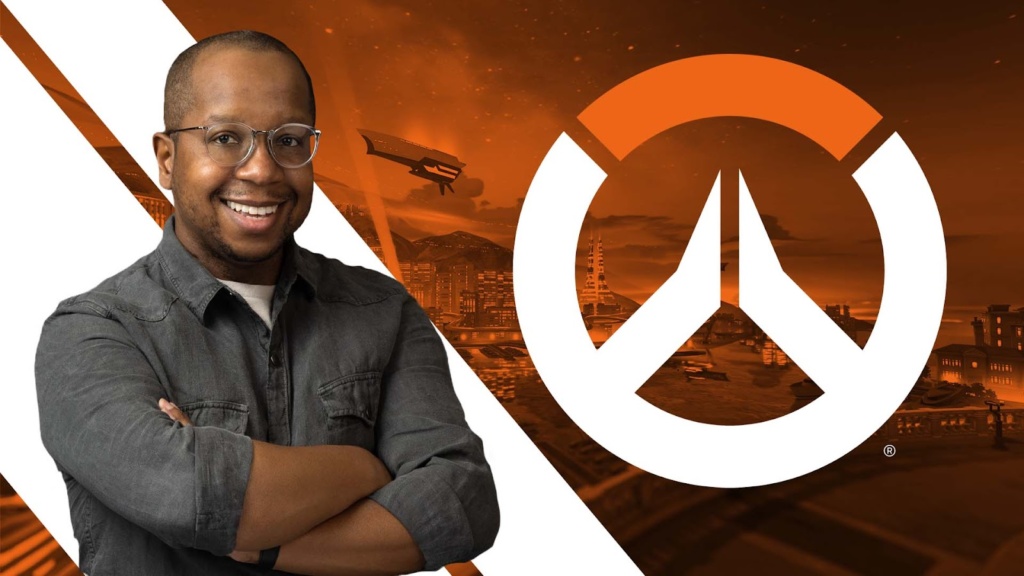
Blizzard’s Dion Rogers shares essential advice on creating work that will get you noticed. This is the first of three posts offering Rogers’ best advice for aspiring game artists.
Twenty years ago, Overwatch 2 Art Director Dion Rogers was a recent college grad with a visual effects degree, and he dreamed of working for Blizzard, his favorite studio.
At the time, Blizzard was staffing up for a new beta project called World of Warcraft. Dion applied twice with a portfolio of realistic orcs and elves—and twice, he was denied.
But the second time, Rogers heard back from the hiring manager who reviewed his materials.
“They told me that for Blizzard, my work needed to be less realistic, more stylized, and more attentive to scale,” says Dion, who strengthened his painting skills, aligned his portfolio with Blizzard’s style, and eventually landed a job as Senior Environment Artist for World of Warcraft. “Getting that advice was a huge step for me.”
Dion Rogers
At Blizzard, studio leaders noticed Dion’s improvements to Warcraft landscapes and his fun, interactive login screens. They recruited him to be Lead Environment artist on Overwatch when it was still in code-named status. Since then, Dion’s artistic style has helped define the game at every stage of development. From Overwatch’s Lead Environment Artist to Assistant Art Director on Overwatch 2, and now the art team’s head honcho, Dion has channeled two decades of accrued Blizzard wisdom into Overwatch’s sunny, color-saturated streets.
Now that Dion is on the other end of so many Blizzard job applications, he tries to pay forward the guidance he got as a young developer. Below, Dion shares tips on what aspiring game artists should include in their portfolios.
This is the first in a series of three pieces with tips from the Overwatch 2 Art Director. You can read the second piece at the link below.
Know The Game 🕹️
Make What the Company Makes 🖌️
Also, the easiest way into a job is to focus on one thing. In schools, you do multiple disciplines, but we’re looking for specialized people—this person does lighting, that person does props. In the portfolio that got me my first job, I had a stylized tree in it, and they happened to need trees at the time.
So if you like Heroes in Overwatch, then just create Heroes. We’re always looking for character modelers.
Do Your Research 🔎
Also, Overwatch has a bright, hopeful tone. Our maps are colorful. We rarely use the color black. Our characters are diverse heroes from around the world. We intentionally take things that some people see as a disability and celebrate them–these are all details you should consider.
Have Your References Ready 🧾
At Overwatch, we do a lot of reference gathering from pictures, photos, books. Sometimes, students create models from concept art they found online. That’s okay; but if you do that for your portfolio, you absolutely need to give credit!
Dion Rogers is an Art Director at Blizzard Entertainment. Collaborating with an international team of artists, he contributes to the visual development and world building of Overwatch and Overwatch 2. As a game developer at Blizzard for over 15 years, Dion has worked on a variety of titles including Heroes of the Storm and World of Warcraft. Born in New Jersey, Dion spent most of his life in North Carolina studying art history and game development. He loves creating bright and vibrant artwork that depicts near-future worlds and fantastical environments. He’s also a devoted miniature wargamer in his spare time.



2 Comments
Melissa Hunter
I love reading about various stuff that is going on in the world. Thanks for the fresh updates!
Tomas Smith
The website looks great and is a perfect fit for a news portal or an online magazine
Comments are closed.